|
The Paradigm Symposium, a gathering primarily of alternative historians, ancient astronaut theorists, and other assorted New Age types, is taking place in Minnesota, and yesterday PZ Myers attended Scott F. Wolter’s lecture on Mary Magdalene’s secret Oreo cookies recipe (it features partially hydrogenated soybean oil and Holy Blood) and was dumbfounded by Wolter’s “revelations,” which are old news to regular readers of this blog after I reviewed Wolter’s Akhenaten to the Founding Fathers a week ago. Myers describes Wolter’s lecture as “bizarre, rambling,” and self-congratulatory, an exercise in the speaker’s own ego more than anything else. While Myers merely scoffed at Wolter’s claims (which I have debunked and challenged at length), particularly that the Oreo cookie contains a secret Masonic-Templar code, he did report a telling detail that I think says it all about the audience for such idiocies: “People applauded. Dear god, wasn’t the cookie slide a loud enough cry for help?” I am astonished that Scott Wolter is actually using the Oreo cookie example in his lectures. I have half a mind to send a note to Nabisco and ask them if they intend to maintain their sponsorship of A+E Networks programming (they advertise on Lifetime) so long as they employ a conspiracy theorist who is profiting from claims that they are part of a cabal of crypto-Jews who run the world in secret. There is almost literally nothing that true believers are not willing to applaud and accept so long as a perceived alternative history “expert” tells them it is the result of deep research. This is all the more ironic, since most of what these “experts” push is a thinly veiled effort to induce the audience to reject mainstream scholars as false and sometimes evil authorities and embrace the alternative researchers with their money and their loyalty. Now, let’s move on to a strange but tangentially related piece from the current issue of the Skeptical Inquirer that suffers from its author’s lack of knowledge about the subject on which he has chosen to debunk. Do you remember the way Scott Wolter claimed that many Native American tribes adopted two-headed eagles as their symbols in alleged imitation of the Masonic two-headed eagle—even centuries before the Masons started using the symbol? At the time, I mentioned how the two headed eagle had been a widespread European heraldic device from the Middle Ages down to the present and therefore entered Masonry from the Prussian king’s personal arms. (Many Native American symbols are of independent origin, though some may be later imitations of Habsburg arms after the Conquest by the forces of the Habsburg Spanish.) This is all background to Brian Regal’s article on “The Jersey Devil: The Real Story” in the November-December 2013 edition of Skeptical Inquirer. In general, the article is a well-written discussion of the origins of the Jersey Devil (originally Leeds Devil) myth in the colonial-era politics of New Jersey. However, Regal, an instructor in the history of science with degrees in American history, has overstepped in assigning part of the origins of the Jersey Devil to my poor, beloved double-headed eagle. My poor eagle gets so much blame: Various people have attributed to it everything from covert Masonic influence to the origin of the pirates’ Jolly Roger in a misreading of Austrian frigates’ double-eagle flags as bearing a black skull on a yellow banner. (Many privateers sailed under Austrian flags due to lax Austrian regulation.) Regal attributes the Jersey Devil to controversy over the Leeds Almanack, which courted controversy in the late 1600s by including “pagan” astrological material. After the original publisher, David Leeds, gave way to his son, Titan Leeds, the Almanack changed, and Regal makes a big deel out of its new format, which includes the coat of arms of the House of Leeds on its masthead. Here’s how Regal describes the arms: In 1728, Titan redesigned the masthead to include the Leeds family crest, which contained three figures on a shield. Dragon-like with a fearsome face, clawed feet, and bat-like wings, the figures, known as wyverns, are suspiciously reminiscent of the later descriptions of the Jersey Devil. They are no such thing. Today, the Leeds family coat of arms is usually depicted with three single-headed black eagles on a white shield separated by a red stripe. In checking the historical sources for heraldry, dating back into the eighteenth century, I found in less than 30 seconds that the arms of the noble family of Leeds were officially defined thus: “Argent, a fess gules, between three eagles displayed sable, a bordure by way of the second.” In other words, a white shield with a red central horizontal stripe above which are two black eagles and one black eagle below. According to the literature, these arms were granted to a Sir Thomas Leeds, knight, sometime after 1338. As for why Titan Leeds chose to display his family’s three eagles as two-headed, I could not say. Generally, in the 1700s two-headed eagles were seen as imperial (being the arms of the Habsburg and Romanov emperors—both borrowing from the Byzantines, with the Russians altering their gold eagle design in the 1700s to match the Habsburgs’ black eagle) and single-headed eagles as royal. Perhaps he was giving himself a promotion. Or perhaps, since the grant of arms did not specify the number of heads, such variations were allowable. I’m not an expert in heraldry and do not really know. But what I do know is that the depiction of the eagles on Leeds’s masthead is virtually identical to depictions of similar eagles in other eighteenth century illustrations. The anemic wings and overly-prominent legs were standard for the time. Take a look at this two-headed eagle of the Russian empress Catherine the Great: And this British private-issue halfpenny from 1796: The degree of stylization depended on the artist, of course, and some eagles were more realistic than others. Nevertheless, the thin wings and thick legs emerge in the 1600s and persist until the middle 1800s, when, under the influence of the redesign of the Habsburg arms to better display the arms of the various territories they controlled on the wings of the eagle, larger, more natural wings and smaller legs came into vogue. (The Russians, always imitating the Habsburgs, altered their arms into a near-identical eagle when redesigned in the mid-1800s.) Anyway, that’s of special interest to me, and probably not you.
The people of New Jersey in the 1700s would have read the symbols on Titan Leeds’s almanac as eagles, not “wyverns,” as they conformed to standard depictions of the animal. Of course, we can’t discount the idea that someone might have taken them for dragon-like monsters, but there is no evidence of this. In short, Regal is projecting his own views of the Jersey Devil onto Leeds’s coat of arms, having already decided that Titan Leeds sparked the Jersey Devil story. This is not a revelation but a back-formation of an origin point for the Jersey Devil image from a pre-conceived conclusion.
19 Comments
charlie
10/20/2013 07:34:06 am
Jason,
Reply
spookyparadigm
10/20/2013 08:36:14 am
"There is almost literally nothing that true believers are not willing to applaud and accept so long as a perceived alternative history “expert” tells them it is the result of deep research. This is all the more ironic, since most of what these “experts” push is a thinly veiled effort to induce the audience to reject mainstream scholars as false and sometimes evil authorities and embrace the alternative researchers with their money and their loyalty."
Reply
CFC
10/20/2013 09:12:49 am
Wasn't PZ Myers also a presenter at the Paradigm Symposium?
Reply
The Other J.
10/20/2013 12:09:45 pm
No, but he is from Minnesota, and the symposium was held in Minneapolis. The symposium is the sort of thing Myers usually argues against, so he was probably just checking out what conversations they were having.
Reply
10/20/2013 12:20:29 pm
I believe that Myers was invited to speak at the symposium this year as the token skeptic.
CFC
10/20/2013 01:12:34 pm
I checked the schedule Other J. and he was on at 1:15 p.m. today according to that.
The Other J.
10/20/2013 01:49:06 pm
Dammit... I checked the schedule too -- must have missed it, or saw the wrong schedule.
Cathleen Anderson
10/20/2013 10:13:47 am
"The degree of stylization depended on the artist, of course, and some eagles were more realistic than others. Nevertheless, the thing wings and thick legs emerge in the 1600s and persist until the middle 1800s, when, under the influence of the redesign of the Habsburg arms to better display the arms of the various territories they controlled on the wings of the eagle, larger, more natural wings and smaller legs came into vogue. (The Russians, always imitating the Habsburgs, altered their arms into a near-identical eagle when redesigned in the mid-1800s.)"
Reply
Only Me
10/20/2013 11:51:20 am
I think one of the commenters on Myers's blog summed up this nonsense quite nicely.
Reply
Shane Sullivan
10/20/2013 06:31:21 pm
Doesn't take a rocket surgeon to figure out that "M&M" stands for Mary Magdalene. Mars, Incorporated, what are you hiding...
Reply
The Other J.
10/20/2013 12:06:06 pm
Eagle? Wyvern? Jersey Devil?
Reply
Erik G
10/20/2013 07:53:02 pm
Ha ha ha! Of course it must have been a pheasant! The plot thickens...
Reply
Matt Mc
10/20/2013 12:59:12 pm
I wonder if the recent news that Oreo's are just as addictive as cocaine (or more so) plays into Wolter's Oreo theory
Reply
Varika
10/21/2013 10:04:26 am
...that would explain why so many people feel the need to ruin otherwise-delectable desserts by throwing those crappy things in and then slapping the label "decadent" on it.
Reply
BigMike
10/21/2013 06:37:20 pm
Hey, now! The Oreo Pie from Denny's is just fantastically decadent!
Maggie
10/21/2013 08:05:29 pm
I've seen a few of Wolter's programs in the past. He had much more restraint on his appearances in the 'Holy Grail in America' special that aired on History a few years ago compared to his Unearthed show. I unfortunately saw the Oreo cookie thing online the other day... so much for restraint.
Reply
10/21/2013 11:49:29 pm
A little of both, but mostly organic due to links on Wikipedia and other sites. I don't go out of my way to make it a top hit, but I do make sure my posts are content-rich, link out to reputable sources, and use SEO keywords for the show. Neither Wolter nor America Unearthed does much online, so that leaves my website as the largest on the topic.
Reply
Jason D.
1/13/2014 02:03:51 pm
Don't worry, Wolter is going to Dunkin Donuts for his Masters in Web Design. He'll have a greater web presence soon. Your comment will be posted after it is approved.
Leave a Reply. |
AuthorI am an author and researcher focusing on pop culture, science, and history. Bylines: New Republic, Esquire, Slate, etc. There's more about me in the About Jason tab. Newsletters
Enter your email below to subscribe to my newsletter for updates on my latest projects, blog posts, and activities, and subscribe to Culture & Curiosities, my Substack newsletter.
Categories
All
Terms & ConditionsPlease read all applicable terms and conditions before posting a comment on this blog. Posting a comment constitutes your agreement to abide by the terms and conditions linked herein.
Archives
July 2024
|
- Home
- Blog
- Books
-
Articles
-
Newsletter
>
- Television Reviews >
- Book Reviews
- Galleries >
- Videos
-
Collection: Ancient Alien Fraud
>
- Chariots of the Gods at 50
- Secret History of Ancient Astronauts
- Of Atlantis and Aliens
- Aliens and Ancient Texts
- Profiles in Ancient Astronautics >
- Blunders in the Sky
- The Case of the False Quotes
- Alternative Authors' Quote Fraud
- David Childress & the Aliens
- Faking Ancient Art in Uzbekistan
- Intimations of Persecution
- Zecharia Sitchin's World
- Jesus' Alien Ancestors?
- Extraterrestrial Evolution?
- Collection: Skeptic Magazine >
- Collection: Ancient History >
- Collection: The Lovecraft Legacy >
- Collection: UFOs >
- Scholomance: The Devil's School
- Prehistory of Chupacabra
- The Templars, the Holy Grail, & Henry Sinclair
- Magicians of the Gods Review
- The Curse of the Pharaohs
- The Antediluvian Pyramid Myth
- Whitewashing American Prehistory
- James Dean's Cursed Porsche
-
Newsletter
>
-
The Library
-
Ancient Mysteries
>
-
Ancient Texts
>
- Mesopotamian Texts >
-
Egyptian Texts
>
- The Shipwrecked Sailor
- Dream Stela of Thutmose IV
- The Papyrus of Ani
- Classical Accounts of the Pyramids
- Inventory Stela
- Manetho
- Eratosthenes' King List
- The Story of Setna
- Leon of Pella
- Diodorus on Egyptian History
- On Isis and Osiris
- Famine Stela
- Old Egyptian Chronicle
- The Book of Sothis
- Horapollo
- Al-Maqrizi's King List
- Teshub and the Dragon
- Hermetica >
- Hesiod's Theogony
- Periplus of Hanno
- Ctesias' Indica
- Sanchuniathon
- Sima Qian
- Syncellus's Enoch Fragments
- The Book of Enoch
- Slavonic Enoch
- Sepher Yetzirah
- Tacitus' Germania
- De Dea Syria
- Aelian's Various Histories
- Julius Africanus' Chronography
- Eusebius' Chronicle
- Chinese Accounts of Rome
- Ancient Chinese Automaton
- The Orphic Argonautica
- Fragments of Panodorus
- Annianus on the Watchers
- The Watchers and Antediluvian Wisdom
-
Medieval Texts
>
- Medieval Legends of Ancient Egypt >
- The Hunt for Noah's Ark
- Isidore of Seville
- Book of Liang: Fusang
- Agobard on Magonia
- Book of Thousands
- Voyage of Saint Brendan
- Power of Art and of Nature
- Travels of Sir John Mandeville
- Yazidi Revelation and Black Book
- Al-Biruni on the Great Flood
- Voyage of the Zeno Brothers
- The Kensington Runestone (Hoax)
- Islamic Discovery of America
- The Aztec Creation Myth
-
Lost Civilizations
>
-
Atlantis
>
- Plato's Atlantis Dialogues >
- Fragments on Atlantis
- Panchaea: The Other Atlantis
- Eumalos on Atlantis (Hoax)
- Gómara on Atlantis
- Sardinia and Atlantis
- Santorini and Atlantis
- The Mound Builders and Atlantis
- Donnelly's Atlantis
- Atlantis in Morocco
- Atlantis and the Sea Peoples
- W. Scott-Elliot >
- The Lost Atlantis
- Atlantis in Africa
- How I Found Atlantis (Hoax)
- Termier on Atlantis
- The Critias and Minoan Crete
- Rebuttal to Termier
- Further Responses to Termier
- Flinders Petrie on Atlantis
- Amazing New Light (Hoax)
- Lost Cities >
- OOPARTs
- Oronteus Finaeus Antarctica Map
- Caucasians in Panama
- Jefferson's Excavation
- Fictitious Discoveries in America
- Against Diffusionism
- Tunnels Under Peru
- The Parahyba Inscription (Hoax)
- Mound Builders
- Gunung Padang
- Tales of Enchanted Islands
- The 1907 Ancient World Map Hoax
- The 1909 Grand Canyon Hoax
- The Interglacial Period
- Solving Oak Island
-
Atlantis
>
- Religious Conspiracies >
-
Giants in the Earth
>
-
Fossil Origins of Myths
>
- Fossil Teeth and Bones of Elephants
- Fossil Elephants
- Fossil Bones of Teutobochus
- Fossil Mammoths and Giants
- Giants' Bones Dug Out of the Earth
- Fossils and the Supernatural
- Fossils, Myth, and Pseudo-History
- Man During the Stone Age
- Fossil Bones and Giants
- Mastodon, Mammoth, and Man
- American Elephant Myths
- The Mammoth and the Flood
- Fossils and Myth
- Fossil Origin of the Cyclops
- History of Paleontology
- Fragments on Giants
- Manichaean Book of Giants
- Geoffrey on British Giants
- Alfonso X's Hermetic History of Giants
- Boccaccio and the Fossil 'Giant'
- Book of Howth
- Purchas His Pilgrimage
- Edmond Temple's 1827 Giant Investigation
- The Giants of Sardinia
- Giants and the Sons of God
- The Magnetism of Evil
- Tertiary Giants
- Smithsonian Giant Reports
- Early American Giants
- The Giant of Coahuila
- Jewish Encyclopedia on Giants
- Index of Giants
- Newspaper Accounts of Giants
- Lanier's A Book of Giants
-
Fossil Origins of Myths
>
-
Science and History
>
- Halley on Noah's Comet
- The Newport Tower
- Iron: The Stone from Heaven
- Ararat and the Ark
- Pyramid Facts and Fancies
- Argonauts before Homer
- The Deluge
- Crown Prince Rudolf on the Pyramids
- Old Mythology in New Apparel
- Blavatsky on Dinosaurs
- Teddy Roosevelt on Bigfoot
- Devil Worship in France
- Maspero's Review of Akhbar al-zaman
- The Holy Grail as Lucifer's Crown Jewel
- The Mutinous Sea
- The Rock Wall of Rockwall
- Fabulous Zoology
- The Origins of Talos
- Mexican Mythology
- Chinese Pyramids
- Maqrizi's Names of the Pharaohs
-
Extreme History
>
- Roman Empire Hoax
- American Antiquities
- American Cataclysms
- England, the Remnant of Judah
- Historical Chronology of the Mexicans
- Maspero on the Predynastic Sphinx
- Vestiges of the Mayas
- Ragnarok: The Age of Fire and Gravel
- Origins of the Egyptian People
- The Secret Doctrine >
- Phoenicians in America
- The Electric Ark
- Traces of European Influence
- Prince Henry Sinclair
- Pyramid Prophecies
- Templars of Ancient Mexico
- Chronology and the "Riddle of the Sphinx"
- The Faith of Ancient Egypt
- Remarkable Discoveries Within the Sphinx (Hoax)
- Spirit of the Hour in Archaeology
- Book of the Damned
- Great Pyramid As Noah's Ark
- Richard Shaver's Proofs
-
Ancient Texts
>
-
Alien Encounters
>
-
US Government Ancient Astronaut Files
>
- Fortean Society and Columbus
- Inquiry into Shaver and Palmer
- The Skyfort Document
- Whirling Wheels
- Denver Ancient Astronaut Lecture
- Soviet Search for Lemuria
- Visitors from Outer Space
- Unidentified Flying Objects (Abstract)
- "Flying Saucers"? They're a Myth
- UFO Hypothesis Survival Questions
- Air Force Academy UFO Textbook
- The Condon Report on Ancient Astronauts
- Atlantis Discovery Telegrams
- Ancient Astronaut Society Telegram
- Noah's Ark Cables
- The Von Daniken Letter
- CIA Psychic Probe of Ancient Mars
- Scott Wolter Lawsuit
- UFOs in Ancient China
- CIA Report on Noah's Ark
- CIA Noah's Ark Memos
- Congressional Ancient Aliens Testimony
- Ancient Astronaut and Nibiru Email
- Congressional Ancient Mars Hearing
- House UFO Hearing
- Ancient Extraterrestrials >
- A Message from Mars
- Saucer Mystery Solved?
- Orville Wright on UFOs
- Interdimensional Flying Saucers
- Poltergeist UFOs
- Flying Saucers Are Real
- Report on UFOs
-
US Government Ancient Astronaut Files
>
-
The Supernatural
>
- The Devils of Loudun
- Sublime and Beautiful
- Voltaire on Vampires
- Demonology and Witchcraft
- Thaumaturgia
- Bulgarian Vampires
- Religion and Evolution
- Transylvanian Superstitions
- Defining a Zombie
- Dread of the Supernatural
- Vampires
- Werewolves and Vampires and Ghouls
- Science and Fairy Stories
- The Cursed Car
-
Classic Fiction
>
- Lucian's True History
- Some Words with a Mummy
- The Coming Race
- King Solomon's Mines
- An Inhabitant of Carcosa
- The Xipéhuz
- Lot No. 249
- The Novel of the Black Seal
- The Island of Doctor Moreau
- Pharaoh's Curse
- Edison's Conquest of Mars
- The Lost Continent
- Count Magnus
- The Mysterious Stranger
- The Wendigo
- Sredni Vashtar
- The Lost World
- The Red One
- H. P. Lovecraft >
- The Skeptical Poltergeist
- The Corpse on the Grating
- The Second Satellite
- Queen of the Black Coast
- A Martian Odyssey
- Classic Genre Movies
-
Miscellaneous Documents
>
- The Balloon-Hoax
- A Problem in Greek Ethics
- The Migration of Symbols
- The Gospel of Intensity
- De Profundis
- The Life and Death of Crown Prince Rudolf
- The Bathtub Hoax
- Crown Prince Rudolf's Letters
- Position of Viking Women
- Employment of Homosexuals
- James Dean's Scrapbook
- James Dean's Love Letters
- The Amazing James Dean Hoax!
- James Dean, The Human Ashtray
- Free Classic Pseudohistory eBooks
-
Ancient Mysteries
>
- About Jason
- Search
© 2010-2024 Jason Colavito. All rights reserved.

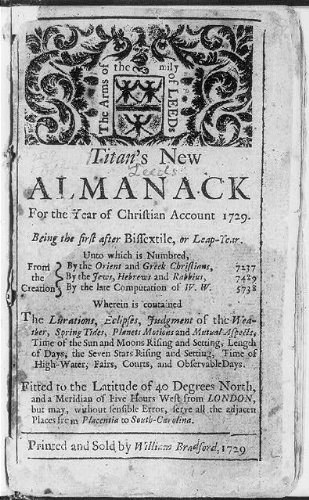
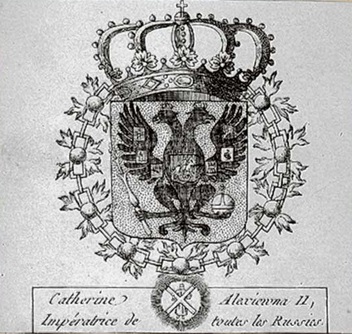
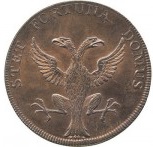
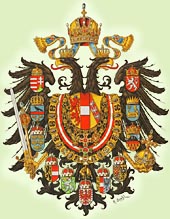
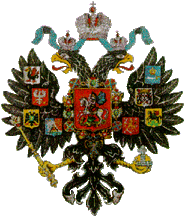



 RSS Feed
RSS Feed
